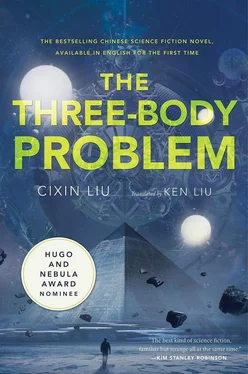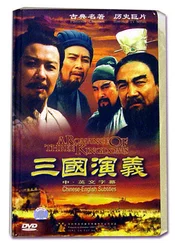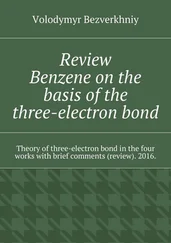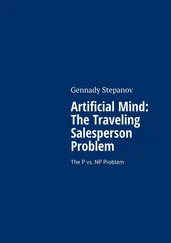Wang performed some computations in his head and realized that even if the entire population of Earth were arranged into such a phalanx, the whole formation would fit inside the Huangpu District of Shanghai. Though it was powerful, the phalanx also revealed the fragility of civilization.
Von Neumann said, “Your Imperial Majesty, your army is truly matchless. In an extremely short time, we have completed such complex training.”
Qin Shi Huang held on to the hilt of his long sword. “Even though the whole is complex, what each soldier must do is very simple. Compared to the training they went through to learn how to break the Macedonian Phalanx, this is nothing.”
Newton added, “And God blessed us with two consecutive Stable Eras to get them trained and ready.”
“Even in a Chaotic Era, my army continues to train. They will finish your calculations even if it’s a Chaotic Era.” Qin Shi Huang glanced over the phalanx with pride in his eyes.
“Then, Your Imperial Majesty, please give the great order!” Von Neumann’s voice trembled with excitement.
Qin Shi Huang nodded. A guard ran over, grabbed the hilt of the emperor’s sword, and stepped backwards. The bronze sword was so long that it was impossible for the emperor himself to pull it out of the scabbard. The guard knelt and handed the sword to the emperor. Qin Shi Huang lifted the sword to the sky, and shouted: “Computer Formation!”
Four giant bronze cauldrons at the corners of the platform came to life simultaneously with roaring flames. A group of soldiers standing on the sloping side of the pyramid facing the phalanx chanted in unison: “Computer Formation!”
On the ground below, colors in the phalanx began to shift and move. Complicated and detailed circuit patterns appeared and gradually filled the entire formation. Ten minutes later, the army had made a thirty-six kilometer square computer motherboard.
Von Neumann pointed to the gigantic human circuit below the pyramid and began to explain, “Your Imperial Majesty, we have named this computer Qin I. Look, there in the center is the CPU, the core computing component, formed from your five best divisions. By referencing this diagram, you can locate the adders, registers, and stack memory. The part around it that looks highly regular is the memory. When we built that part, we found that we didn’t have enough soldiers. But luckily, the work done by the elements in this component is the simplest, so we trained each soldier to hold more colored flags. Each man can now complete the work that initially required twenty men. This allowed us to increase the memory capacity to meet the minimum requirements for running the Qin 1.0 operating system. Observe also the open passage that runs through the entire formation, and the light cavalry waiting for orders in that passage: That’s the system bus, responsible for transmitting information between the components of the whole system.
“The bus architecture is a great invention. New plug-in components, which can be made from up to ten divisions, can quickly be added to the main operation bus. This allows Qin I’s hardware to be easily expanded and upgraded. Look further still—you might have to use the telescope for this—and there’s the external storage, which we call the ‘hard drive’ at Copernicus’s suggestion. It’s formed by three million soldiers with more education than most. When you buried all those scholars alive after you unified China, it’s a good thing you saved these ones! Each of them holds a pen and a notepad, and they’re responsible for recording the results of the calculations. Of course, the bulk of their work is to act as virtual memory and store intermediate calculation results. They’re the bottleneck for the speed of computation. And, finally, the part that’s closest to us is the display. It’s capable of showing us in real time the most important parameters of the computation.”
Von Neumann and Newton carried over a large scroll, tall as a man, and spread it open before Qin Shi Huang. When they reached the scroll’s end, Wang’s chest tightened, remembering the legend of the assassin who hid a dagger in a map scroll that he then displayed to the emperor. But the imaginary dagger did not appear. Before them was only a large sheet of paper filled with symbols, each the size of a fly’s head. Packed so densely, the symbols were as dazzling to behold as the computer formation on the ground below.
“Your Imperial Majesty, this is the Qin 1.0 operating system we developed. The software for doing the calculations will run on top of it. That below”—Von Neumann pointed to the human-formation computer—“is the hardware. What’s on this paper is the software. The relationship between hardware and software is like that between the guqin zither and sheet music.”
He and Newton then spread open another scroll, just as large. “Your Imperial Majesty, this is the software for using numerical methods to solve those differential equations. After entering the motion vectors of the three suns at a particular moment obtained by astronomical observation, the software’s operation will give us a prediction for the suns’ subsequent motion at any moment in the future. Our first computation will calculate all the suns’ positions for the next two years. Each set of output values will be one hundred and twenty hours apart.”
Qin Shi Huang nodded. “Good. Begin.”
Von Neumann lifted both hands above his head and solemnly chanted: “As ordered by the great emperor, turn on the computer! System self-test!”
A row of soldiers standing halfway down the face of the pyramid repeated the order using flag signals. In a moment, the motherboard made of thirty million men seemed to turn into a lake filled with sparkling lights. Tens of millions of tiny flags waved. In the display formation closest to the base of the pyramid, a progress bar made of numerous green flags slowly advanced, indicating the percentage of the self-test that had been completed. Ten minutes later, the progress bar reached its end.
“Self-test complete! Begin boot sequence! Load operating system!”
Below, the light cavalry on the main bus that passed through the entire human-formation computer began to move swiftly. The main bus soon turned into a turbulent river. Along the way, the river fed into numerous thin tributaries, infiltrating all the modular subformations. Soon, the ripple of black and white flags coalesced into surging waves that filled the entire motherboard. The central CPU area was the most tumultuous, like gunpowder on fire.
But suddenly, as though the powder had been exhausted, the movements in the CPU slackened and eventually stopped. Starting with the CPU in the center, the stillness spread in every direction, like a sea being frozen over. Finally, the entire motherboard came to a stop, with only a few scattered components flashing lifelessly in infinite loops. The center of the display formation blinked red.
“System lockup!” a signal officer called out. Shortly after, the reason for the malfunction was determined: There was an error with the operation of one of the gates in the CPU status register.
“Restart system!” Von Neumann ordered confidently.
“Wait!” Newton stopped the signal officer. He turned with an insidious expression and said to Qin Shi Huang, “Your Imperial Majesty, in order to improve system stability, you should take certain maintenance measures with respect to faulty components.”
Qin Shi Huang grasped his sword and said, “Replace the malfunctioning component and behead all the soldiers who made up that gate. In the future, any malfunctions will be dealt with the same way!”
Von Neumann glanced at Newton, disgusted. They watched as a few riders dashed into the motherboard with their swords unsheathed. After they “repaired” the faulty component, the order to restart was given. This time, the operation went very smoothly. Twenty minutes later, Three Body ’s Von Neumann architecture human-formation computer had begun full operations under the Qin 1.0 operating system.
Читать дальше












